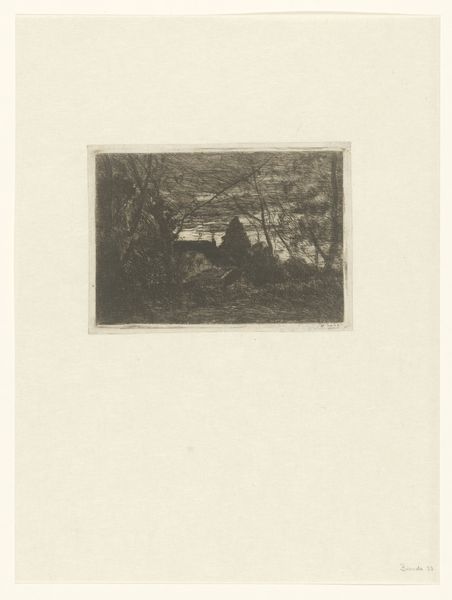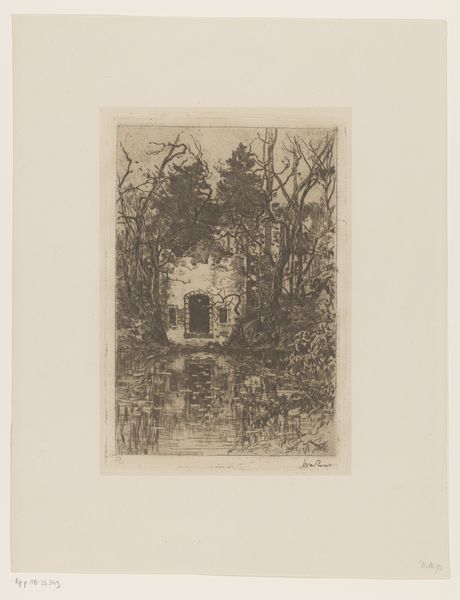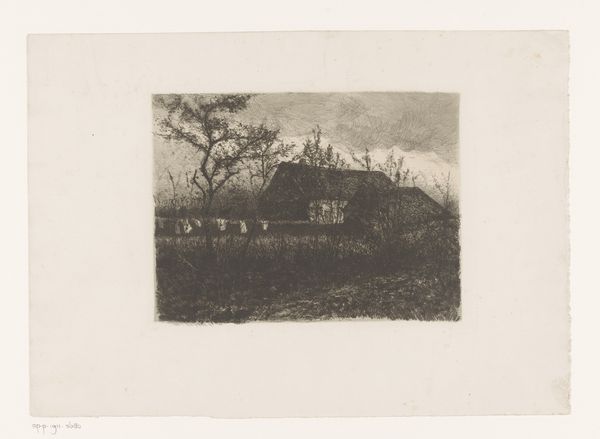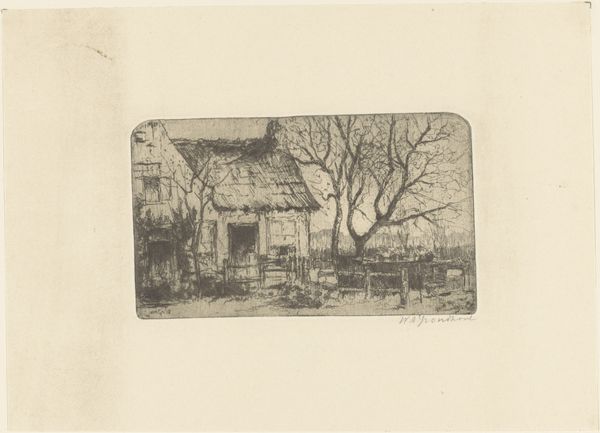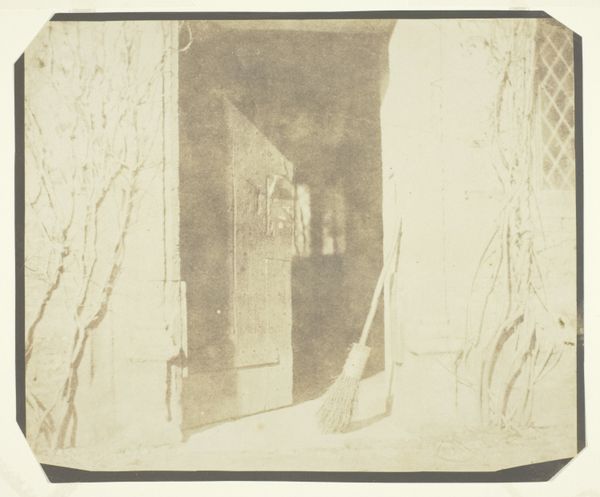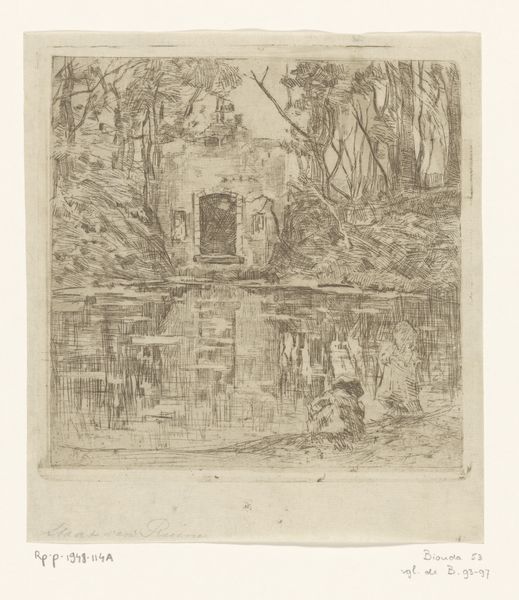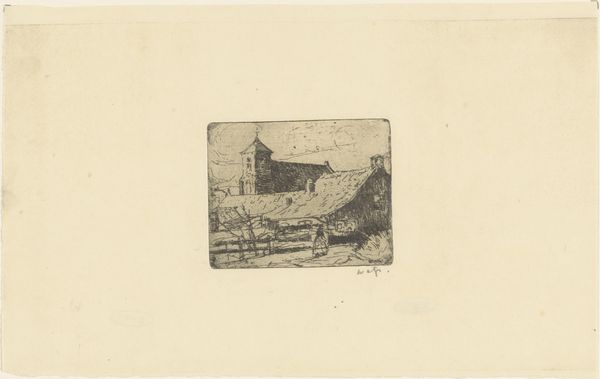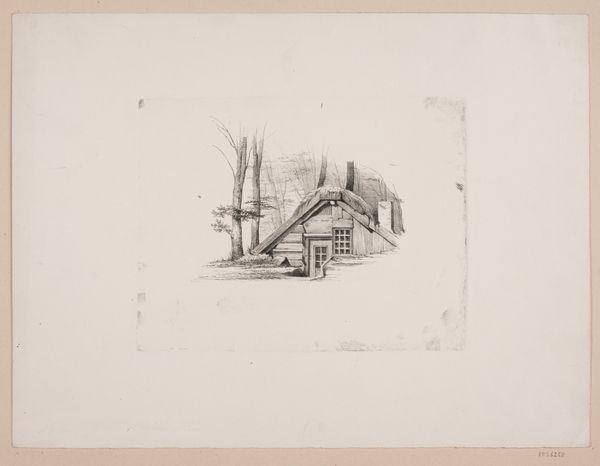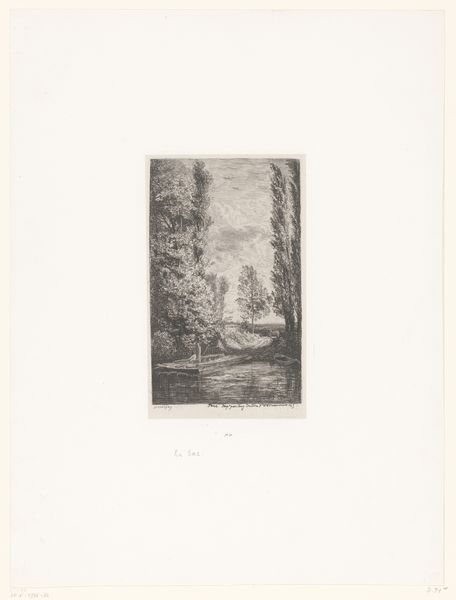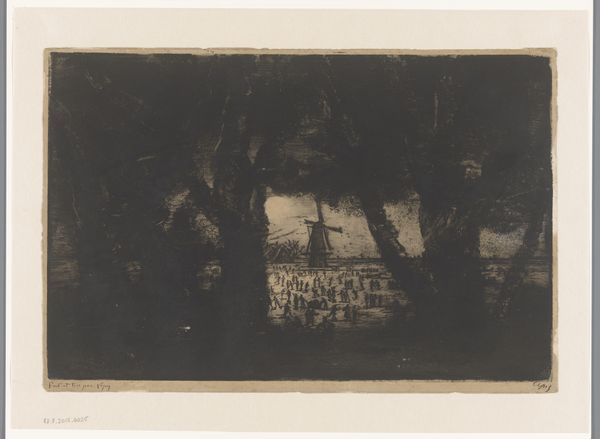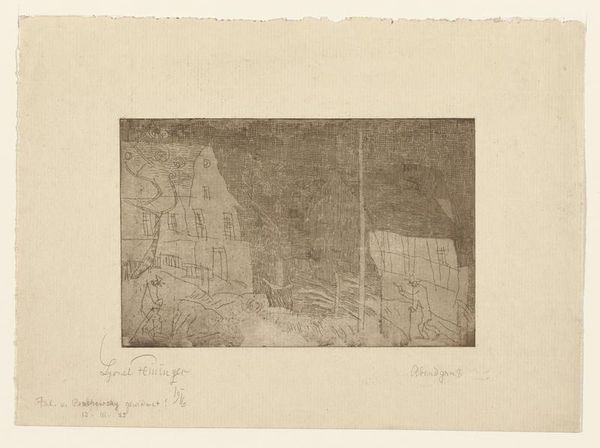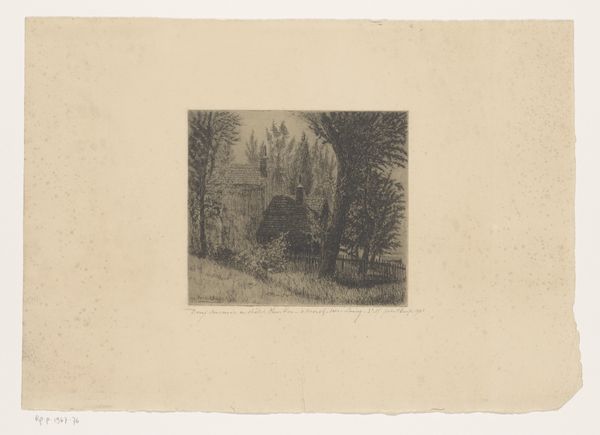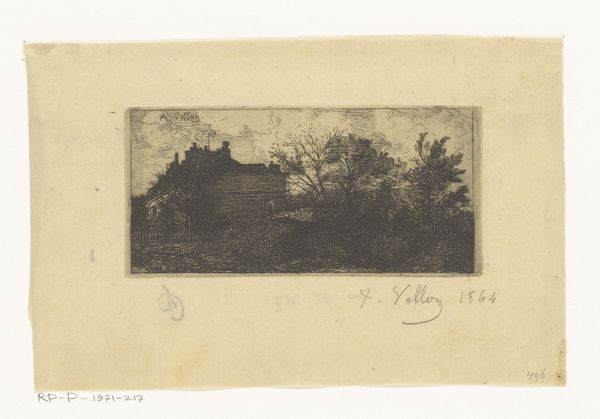
print, etching, paper
#
dutch-golden-age
# print
#
etching
#
landscape
#
paper
#
realism
#
monochrome
Dimensions: height 98 mm, width 160 mm
Copyright: Rijks Museum: Open Domain
Curator: So, here we have Philip Zilcken's "Wooden House and Trees Along a Ditch," made sometime between 1867 and 1890. It’s currently part of the Rijksmuseum collection. Editor: It has a certain haunting quality to it, wouldn’t you agree? The muted tones, the reflections in the water. The monochrome aesthetic definitely draws the eye in. Curator: Absolutely. The etching and paper medium used give it a specific historical and stylistic context. We often associate etchings like these with a Dutch Golden Age tradition of landscape printmaking. Zilcken lived during a fascinating period; his prints represent both the persistence of landscape conventions and modern inclinations toward Realism. Editor: Etching also inherently involves a process rooted in materiality, doesn't it? Thinking of the copperplate, the acid baths used to incise the lines—all the unseen labor embedded in the final image on paper. This one seems quite detailed; it is a product of immense control by the artist through meticulous etching and proofing. Curator: True. And within that precise handling, there’s a reflection of broader societal attitudes to rural life. The setting may appear quite common, but it has been interpreted and mediated by someone working within artistic circles who understood the romantic allure of nature. What seems simple is deliberately constructed. Editor: I'm also drawn to that single figure near the house. It really emphasizes the scale of the buildings. It really shows the lived environment. There are buildings and structures and landscapes, and then people working, surviving within them. The social environment being brought forward through material things. Curator: It reminds me of other landscape prints from the era. I find a nostalgic quality in these pieces and this era, don’t you think? An appeal to quieter times? Editor: Definitely. Thinking of how the houses here stand sturdy, weathered through time. Even these material conditions that come with landscapes as subject, can provide us a look at history itself. Curator: Well, examining the social backdrop and technical processes used really enriched the image for me. Thanks for that view. Editor: Indeed. Getting to the heart of process really informs how we should be experiencing this piece.
Comments
No comments
Be the first to comment and join the conversation on the ultimate creative platform.

